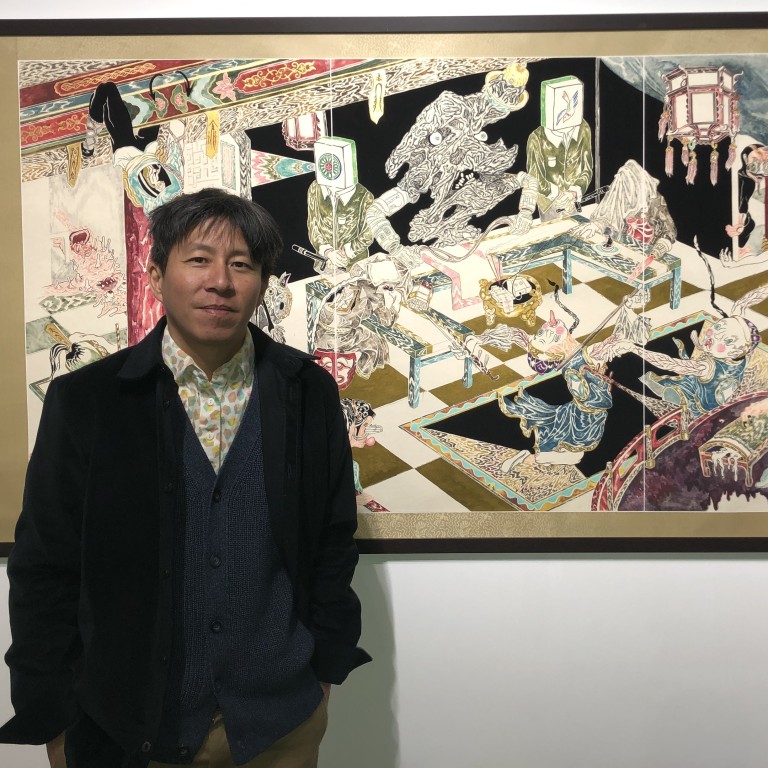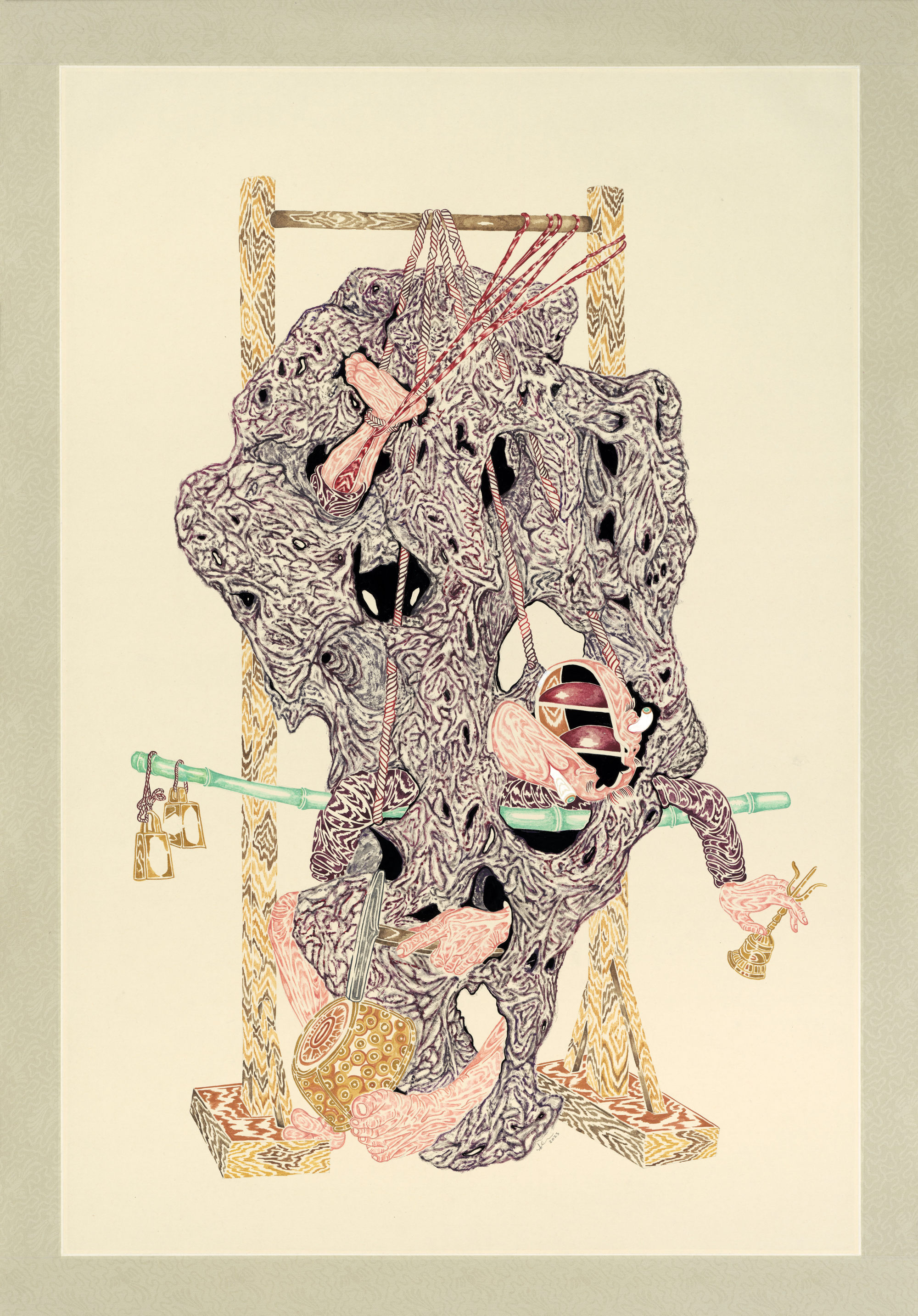
Hong Kong-born artist inspired by wuxia martial arts novels creates intriguing works filled with visually lavish nightmares
- Howie Tsui says novels by the likes of Jin Yong influence his practice, especially since they were often adapted into popular 1980s Hong Kong television series
- His first solo exhibition in Hong Kong, ‘The Cradle Rocks Above an Abyss’, is currently showing at Hanart TZ Gallery in Kwai Chung
The sound of kung fu fighting can be heard as soon as visitors step from the lift outside Hanart TZ Gallery
It comes from an animated video called Parallax Chambers (2018-), a key work in “The Cradle Rocks Above an Abyss”, Howie Tsui’s first solo exhibition in Hong Kong.
In the film, recurring characters in ancient Chinese costumes are seen either in combat, practising moves or just quietly meditating inside a room or a cave.
Once in a while, laser beams zap through the screen, briefly illuminating the dark, confined spaces in which a bizarre cast, including a monk missing the top half of his head, are trying to become stronger fighters.

A separate work made from a wooden wing chun dummy stands guard at the other end of the gallery, overlooking a dazzling display of equally intriguing paintings – elaborate ink and paint drawings on mulberry or rice paper that blend Chinese ink techniques with contemporary manga.
These, like the film, are packed with fascinating characters. In the two-metre-long The Banquet (2023), a veiled woman is calmly playing the guzheng (a Chinese zither) in a traditional Chinese banquet hall surrounded by monsters of all kinds. A couple of pig-tailed musicians have tossed their own instruments into the air, their arms covered in horrendous veins. A robot shaped like a scholar’s rock holds court, flanked by two people tucking into small black birds while hiding under white cloths. Armed guards with mahjong tiles for heads, and people with surveillance cameras instead of eyes, look on.

Tsui had a peripatetic childhood. His father had a job at a textile factory in Lagos, Nigeria, and he took the family with him in 1984, when Tsui was six. A few years later, they settled in Thunder Bay, Canada, a mostly white, working-class neighbourhood. Tsui would not return to Hong Kong until 2010.
“After Hong Kong and Lagos, Thunder Bay seemed super desolate, bleak and spread out. There was major stimulus deprivation. A lot of the art I was making as a kid was these extremely crazy, chaotic pictures. I think I was doing it to escape the stasis of that place, and to try and transport myself to [Hong Kong]. I only realised that when I came back to visit,” he says.

Hence the exhibition title – Hong Kong is his cradle, he says.
“My relationship with the city was completely cut off for so many years. The only conception I had of Hong Kong was through all the pop culture, what I saw on video tapes. But my conception of home is probably to do with the urban environment and the kinetic energy in Hong Kong,” he says.
The exhibition title, borrowed from the Russian-American novelist Vladimir Nabokov, also refers to the uncertainty faced by the city of his birth, as well as the perilousness of world affairs today.

Amid the chaos of real life, Tsui has decided to give up control in his imagined world, too. Parallax Chambers is actually made up of hundreds of ink drawings from which a computer algorithm creates new scenes.
But no computer can help him sharpen his laborious, sometimes lonely studio practice.
“As an artist, I believe in the importance of skills. Like a martial arts practitioner who trains in a hermetic space, I hope I am getting stronger working in my studio in my backyard.”

“Howie Tsui: The Cradle Rocks Above An Abyss”, Hanart TZ Gallery, 2/F, Mai On Industrial Building, 19 Kung Yip Street, Kwai Chung, Mon-Fri, 10am-6.30pm, Sat, 10am-6pm. Until March 9.

